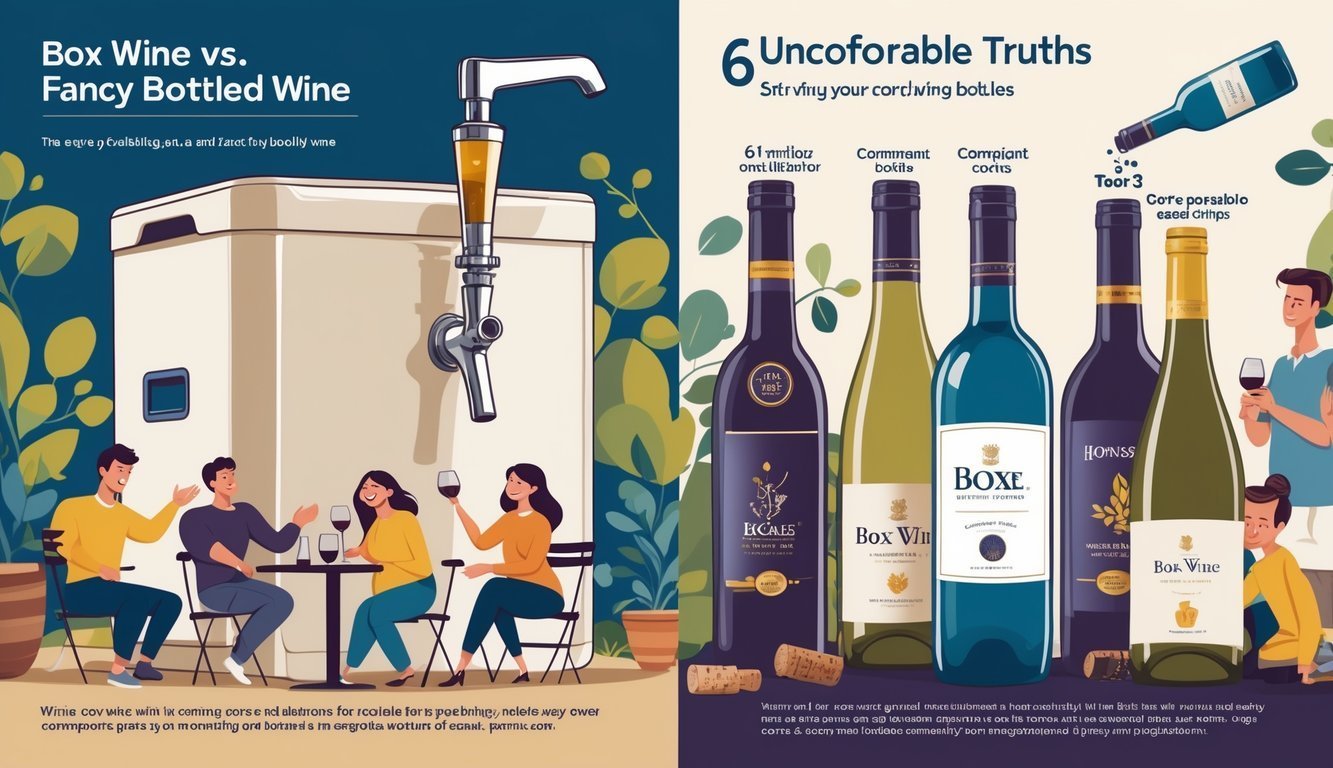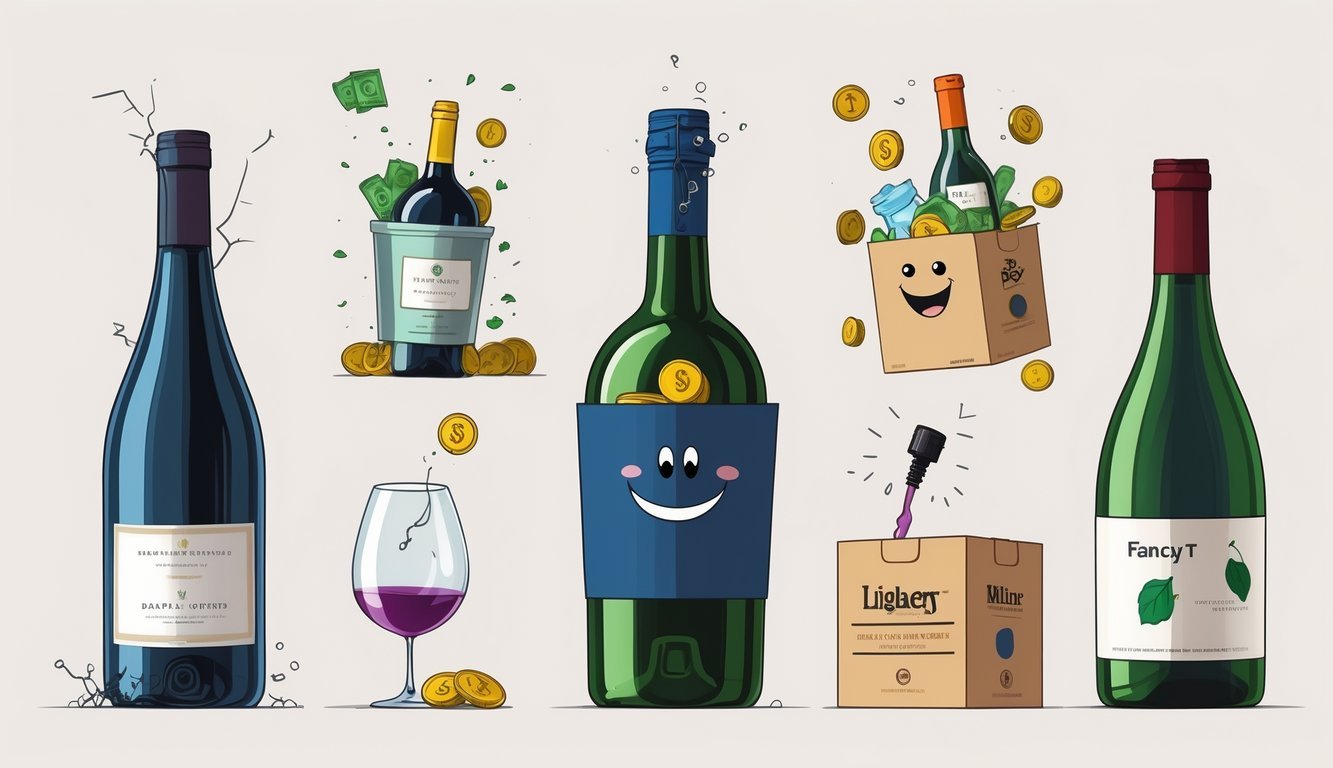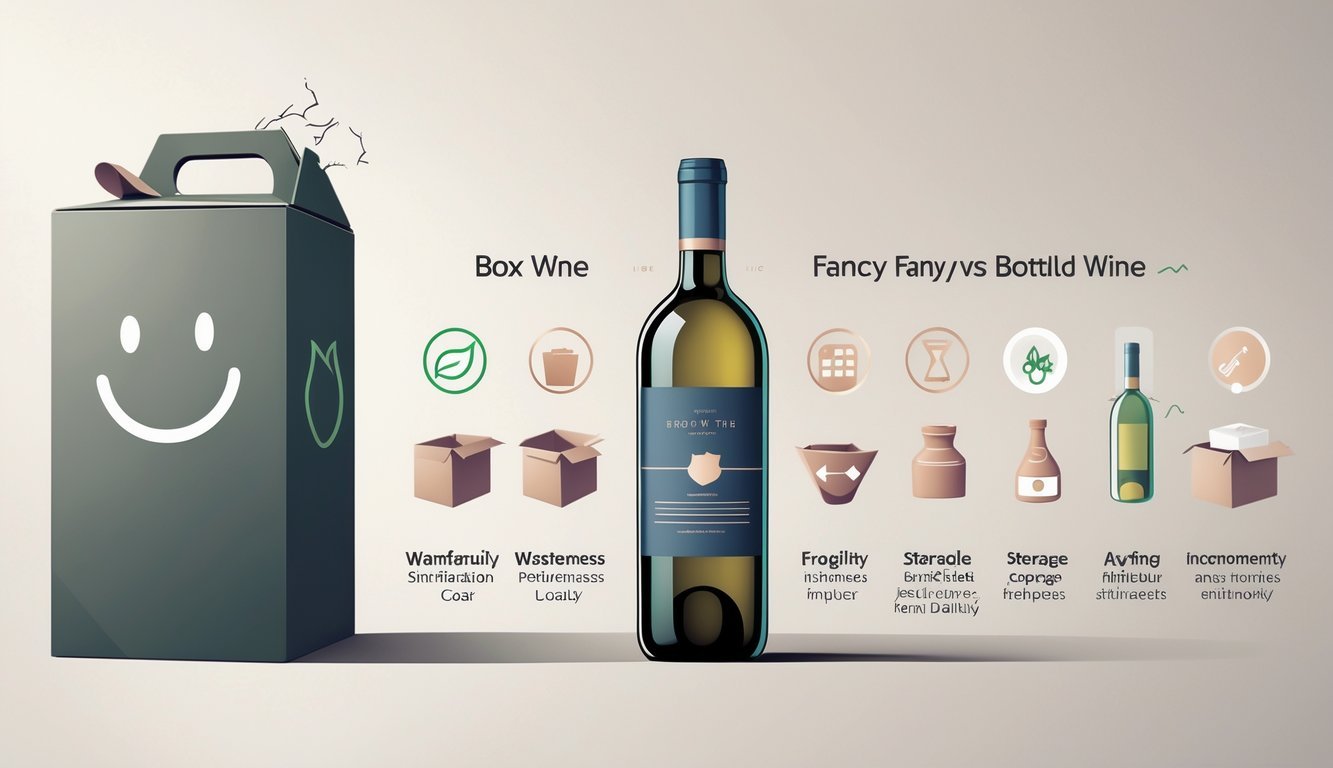PsychNewsDaily Publishers
100 Summit Drive
Burlington, MA, 01803
Telephone: (320) 349-2484
PsychNewsDaily Publishers
100 Summit Drive
Burlington, MA, 01803
Telephone: (320) 349-2484
Boxed wine offers affordability, longevity, and eco-friendliness, with a variety of styles available, making it an excellent choice for casual drinkers and gatherings.

Boxed wine gets a bad rap, but honestly, it offers some real perks that fancy bottles just don’t. It’s cheaper, stays fresh longer, and you can stash it pretty much anywhere. People usually assume glass bottles are always better, but boxed wine uses a clever bag inside that keeps air out. So even after you open it, the wine hangs onto its flavor.
When you grab a box, you get way more wine for your buck. It’s a great fit for casual drinkers who want something easy and don’t want to fuss over taste. These six uncomfortable truths might just change how you think about wine altogether.
Curious why a boxed wine might actually outshine your expensive bottle? Keep going. You’ll find surprising facts that challenge wine snobbery and make boxed wine look like a pretty smart choice.

Boxed wine brings some surprising benefits most bottle fans just don’t notice. It stays fresh, costs less, and is way more eco-friendly. There’s actually a big range of wine styles in boxes, and they work for everything from summer hangouts to big dinner parties.
Boxed wine uses a bag-in-box system that keeps air out. Your wine won’t spoil quickly after you open it.
Bottles can oxidize in just a few hours, but boxed wine usually stays good for weeks. If you don’t finish the box right away, no worries—the airtight bag inside collapses as you pour, so air never touches the wine.
You can pour a glass of Shiraz or Chardonnay over several days without losing flavor. This is perfect for wines that aren’t meant to age.
Box wine almost always costs less per liter than bottled wine. You get more wine in one go—often the equivalent of four or five bottles—but pay less.
You don’t need to give up taste to save money, either. Many boxed wines use quality grapes and work great for casual sipping or cooking.
If you want value and more wine for your dollar, boxed wine beats the fancy bottles that charge for branding and packaging.
Boxed wine packaging leaves a lighter footprint on the planet. The box and bag use fewer materials and weigh less, so shipping uses less fuel.
That means less waste and lower emissions compared to heavy glass bottles. If sustainability matters to you, boxed wine is a solid pick.
You can stash the box in your fridge or pantry without worrying about breaking glass. That’s one less thing to stress about when moving or storing wine.
Boxed wine is a host’s dream. The bigger volume means you avoid running back to the store mid-party.
You can pour red, white, or even sparkling wines for a crowd at a barbecue or dinner without popping open bottle after bottle.
Since it stays fresh after opening, you don’t have to finish it in one night. Boxed wine also works great for spritzers or sangrias if you want to mix things up.
People often assume boxed wine means cheap blends, but that’s not true anymore. You can get:
Wineries keep adding great wines to the bag-in-box lineup, so you have choices for all sorts of tastes and occasions.
Wine critics and snobs love to dismiss boxed wine, but they miss the point. The wine’s quality depends on the grapes and how it’s made, not the packaging.
Bag-in-box packaging actually protects wine from too much air, so it doesn’t age badly. The idea that only bottled wine is “real wine” feels pretty outdated now.
You can enjoy good wine from a box, skip the glass hassle, and not pay a premium just for a fancy label.

You might think boxed wine can’t hold its own against fancy bottles, but things aren’t so clear-cut. The way people judge taste, aging, and even the image of boxed wine has changed a lot lately.
Boxed wine usually features popular varietals like Cabernet Sauvignon, Merlot, and Chardonnay. These wines focus on fresh, easy-to-drink flavors—think dark cherry, honey, or soft tannins.
You probably won’t find the complex notes of an aged Burgundy, but boxed wines aim for balance and drinkability. They skip the harsh acidity or heavy tannins you get from long aging.
Boxed wine targets drinkers who want good taste without all the hype. If you like straightforward, well-made wine, you might be surprised how much you enjoy it.
Don’t expect boxed wine to get better with age like a rare vintage. Most boxed wines are made for immediate enjoyment and should be drunk within a year or two of packaging.
The packaging keeps oxygen out, which keeps wine fresh but doesn’t help it age. Some folks think boxed wine is low quality because it doesn’t age, but that’s just not true.
The wine inside can be just as good as what’s in a bottle. The main difference? Boxed wine stays fresh for weeks after opening, while bottled wine spoils fast.
Polyphenols and tannins, which help wine age, are usually moderate in boxed wines. You get steady flavor, but not the added layers that come with aging.
People are starting to see boxed wine in a new light, especially as more folks care about eco-friendliness and value. The packaging cuts down on glass and waste, which is a big plus now.
Boxed wine’s reputation is on the rise, too, as the quality keeps getting better. Just like craft beer changed how people think about cans, boxed wine is earning respect for its convenience and fresh taste.
Attitudes are shifting away from the idea that only expensive bottles matter. You might find boxed wine fits your lifestyle, whether you’re chilling with friends or heading out for a picnic.

You probably have questions about boxed wine—cost, quality, taste, and how long it lasts. People also wonder about the environmental impact and how packaging affects freshness.
Boxed wine usually gives you more wine for your money. Since boxes hold several bottles’ worth, you save cash, especially if you drink often or host gatherings.
Many boxed wines match bottled wines at similar prices. Most boxed wine aims for affordable, everyday styles, so while the quality can be solid, it won’t match the very best bottles.
Boxed wine lasts way longer after opening. The bag inside collapses as you pour, so oxygen can’t spoil the wine. You can keep it fresh for weeks, not just days.
Boxed wine uses less plastic and creates less waste than glass bottles. It’s lighter, so shipping is greener, making boxed wine a more eco-friendly option.
A lot of people think boxed wine tastes worse, but that’s not always true. Taste comes from the wine itself, not the container. Some boxed wines are really fresh and enjoyable—the old stereotypes just don’t fit anymore.
The bag-in-box design does a solid job keeping oxygen out, so the wine holds onto its flavor after you open it.
But honestly, most boxed wine is made for drinking soon after you buy it. It’s just not the best pick if you’re hoping to age your wine or chase after those more complex flavors you find in some bottles.